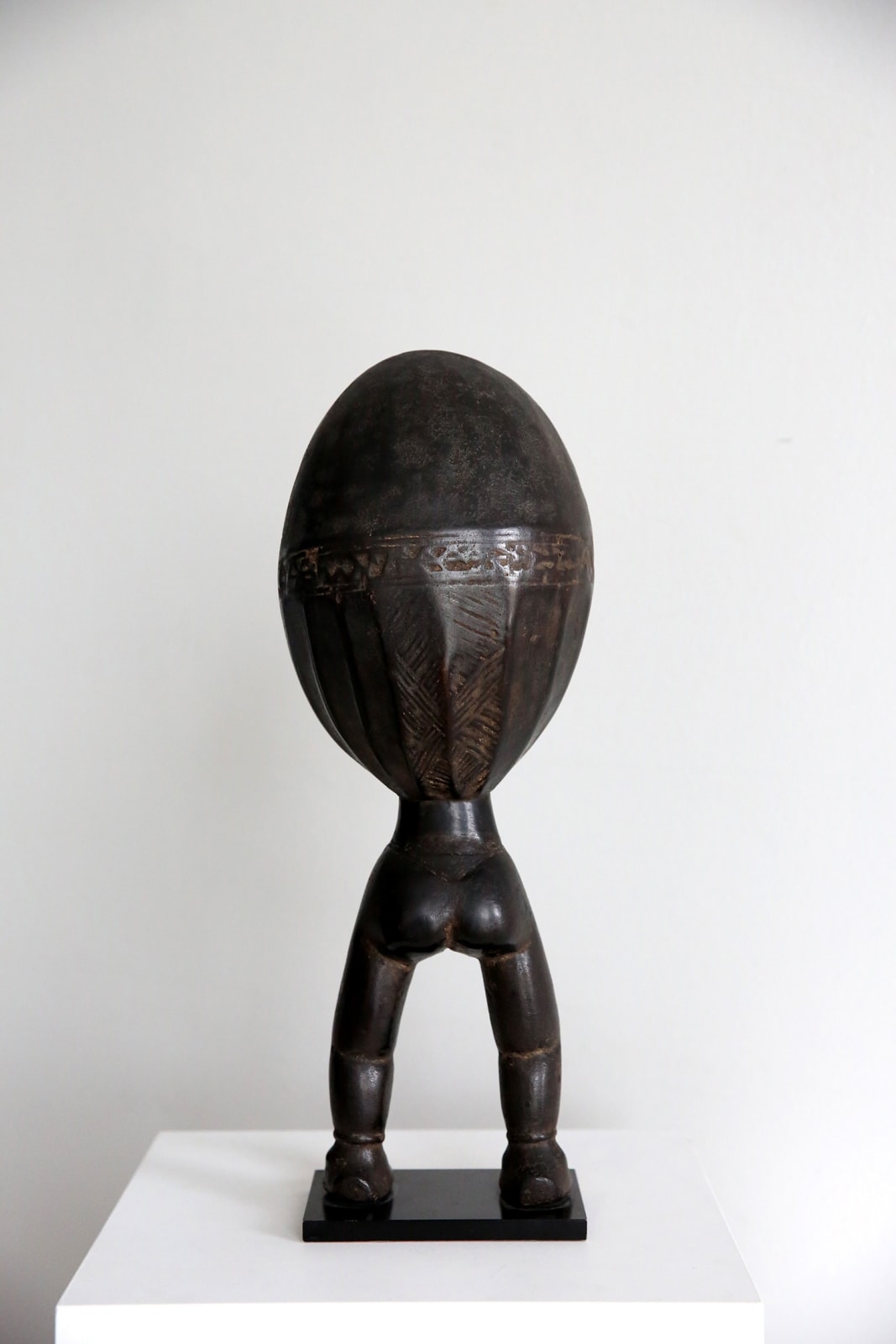Anonymous Dan artist
Wood
height 16 1/8 in
Further images
Ivory Coast’s Dan culture is famous for its beautifully sculpted figurative spoons; known as wakemia or wunkirmian, which literally means ‘feast ladle’. Such large ceremonial spoons were the status symbol and prized possession of the wunkirle or wakede; the most hospitable woman of each town quarter. The wunkirle gained her reputation through her generosity, with the most recognition garnered through the hospitality shown to visiting strangers. Several obligations and responsibilities came with the honor of this prestigious title. Within her household the wunkirle was responsible for the management of the food supplies of the entire family. She offered food and shelter to visitors and invited travelling dance groups and musicians to her home. The wakede supplied food to the participants of the circumcision camp and during planting time she prepared the meals for the men clearing the fields. In order to be able to fulfill this myriad of duties, the wunkirle and her husband had to enjoy a certain prosperity by being successful and industrious farmers.
These wooden spoons mainly served as ceremonial dance wands. During feasts each wakede carried her spoon through town dancing and scattering raw rice, peanuts and occasionally coins or candy. She was accompanied by other women from her quarter who played on bamboo slit drums or carried pots of boiled rice and soup. The wakede used her spoon to divide the food amongst the guests, or rather, indicated the desired distribution with it. During these festivals the different wunkirlone of the village competed in generosity. Visiting guests judged which wunkirle was the most generous. This performance of all wakede and their crews was a spectacular gathering and celebration of the importance of the female role within society. When a wunkirle became too old, she would choose her successor among the married women of her village quarter.
As the Dan were a patrilocal society, with wives usually coming from other villages, the spoon would not be passed on to her own daughter. Dan sculptors created a wide range of wunkirmian. Depiction of legs such are on the present spoon are not the most common anthropomorphic feature carved as a ladle’s handle: more frequent are handles representing the likeness of a human head. The bowl of the ladle represents the torso and forms a wonderful surrealist interpretation of the human body. This specific type of Dan spoons is called megalumia, or ‘legged wooden spoon’ and most likely represents the wunkirle. This beautiful example of the Rouayroux collection sets itself apart within the corpus by its beautiful proportions, the roundness of its scoop, the elegant transition between body and bowl, and the depth of its patina.
Provenance
Collection Max Rouayroux, Nice, France
Rouayroux family collection, France, -2016
Binoche & Giquello, Paris, 19 May 2016, lot 35.
Private Collection, Germany, 2016-2023
Exhibitions
“La rencontre du ciel et de la terre”,
Musée de la Castre, Cannes, France, 1990
Publications
“La rencontre du ciel et de la terre”, Cannes: Ville de Cannes/Z’éditions, 1990, p. 15, #21









